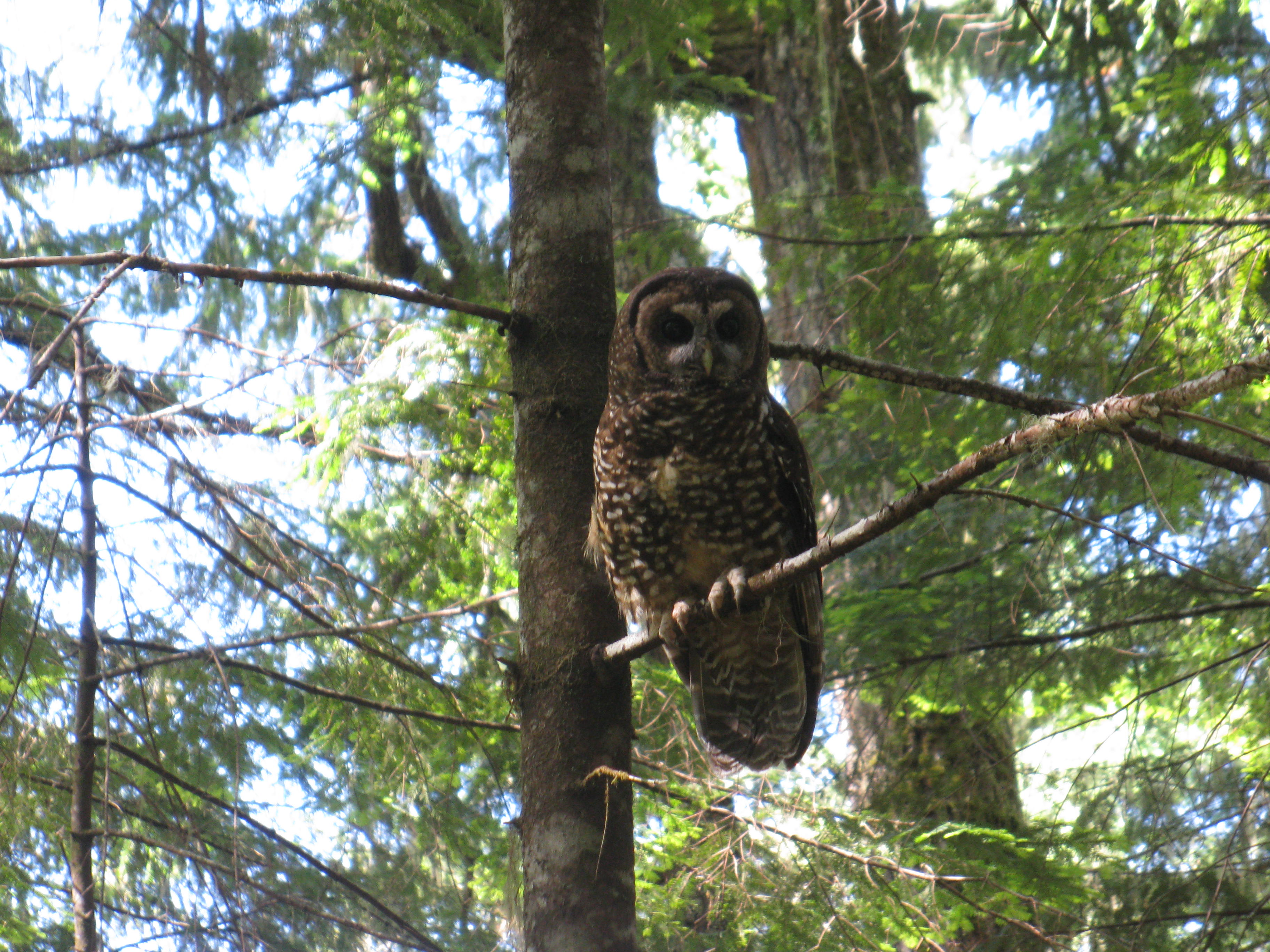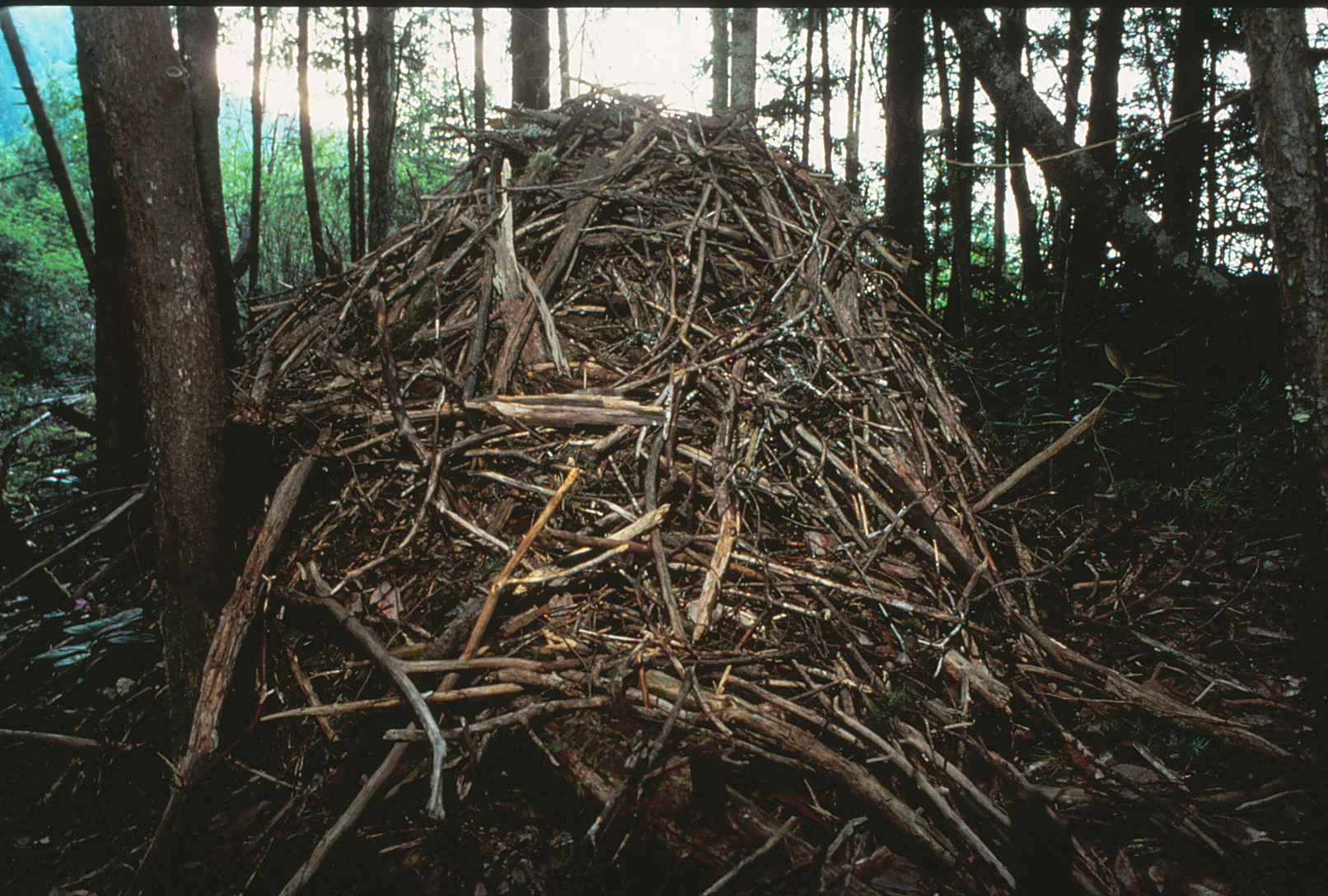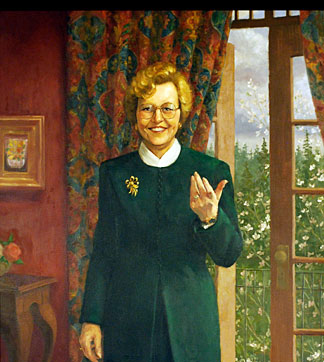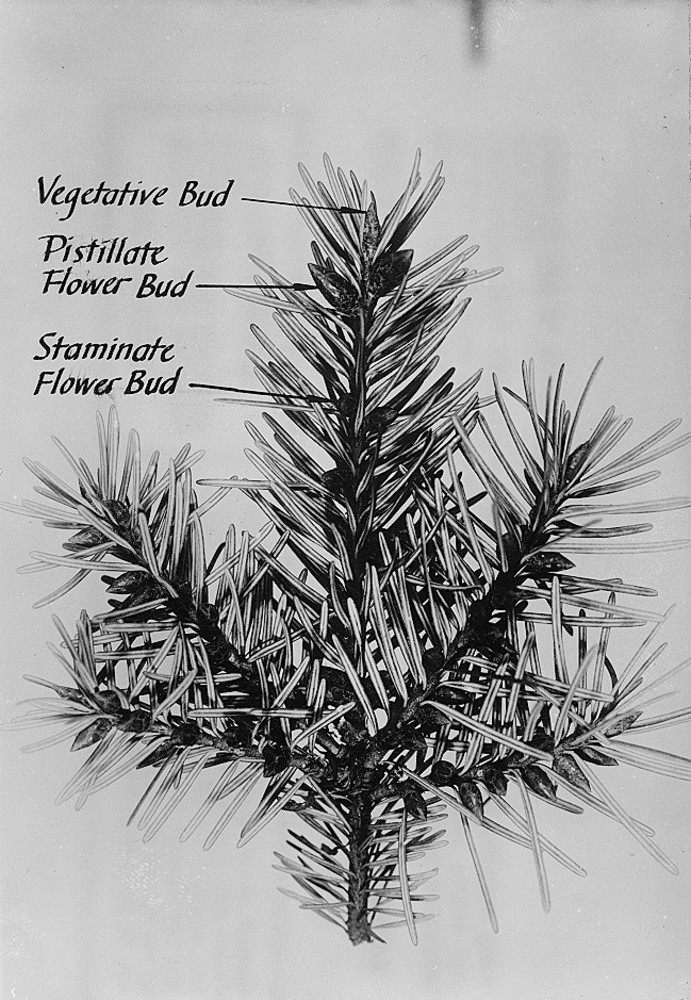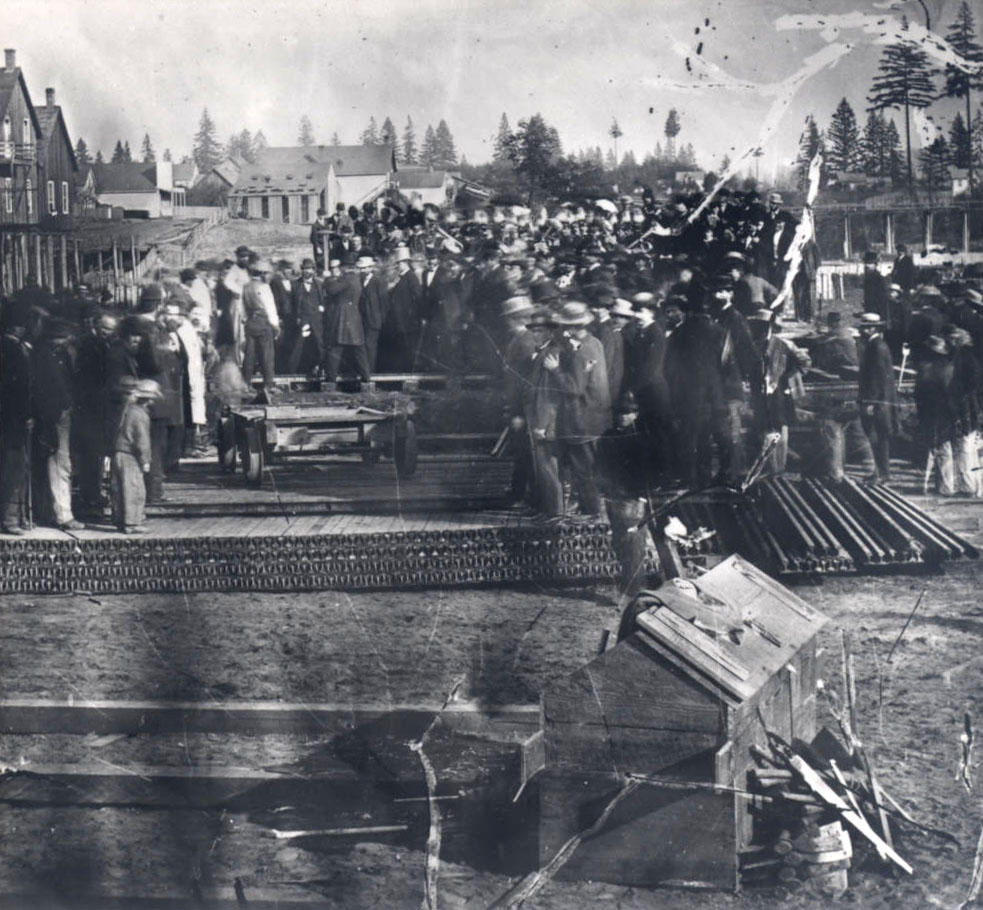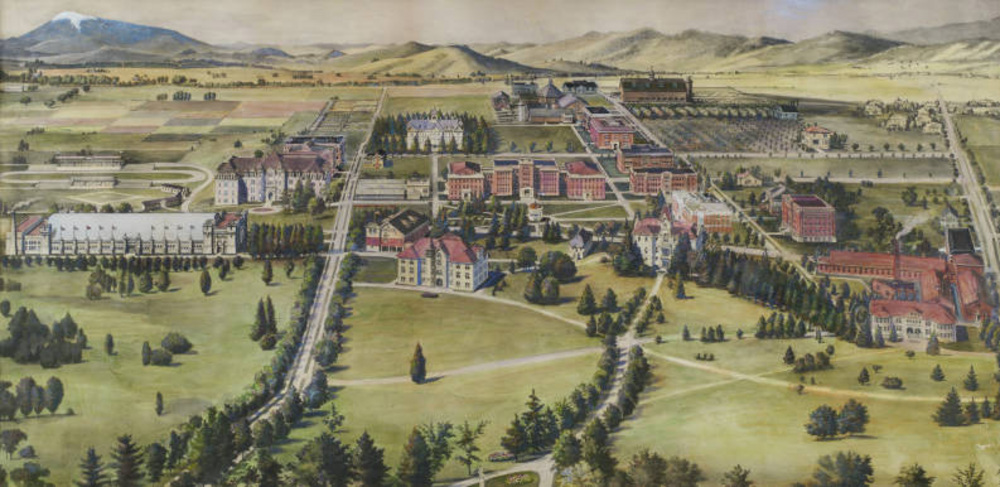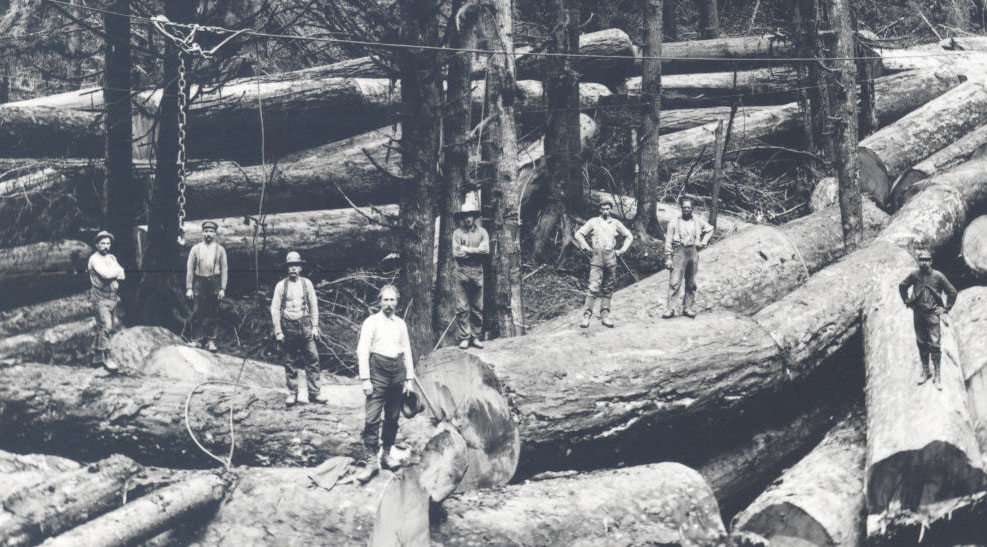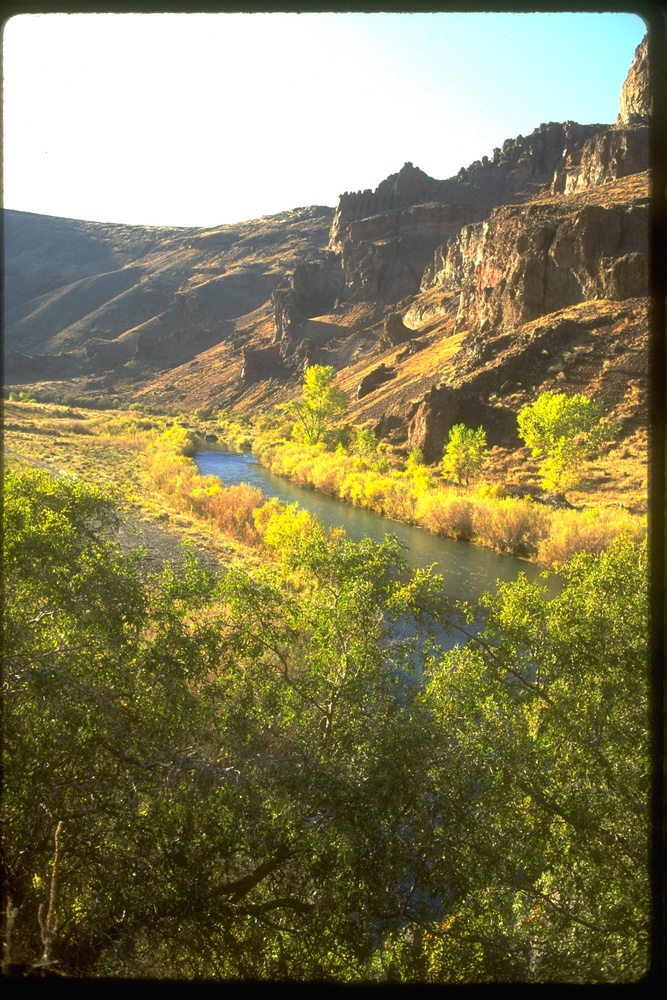Natural History
The northern spotted owl (Strix occidentalis caurina), one of three subspecies of the spotted owl in North America, is a midsized bird, weighing 600 to 800 grams (about 1¼ to 1¾ pounds), that lives primarily in the dense, older forests of western Oregon, where trees are more than 120 years old. Spotted owls do their part to maintain a healthy ecosystem by keeping rodent populations in balance, and the size of their home range is believed to be associated with the availability of prey—primarily Humboldt’s flying squirrels, red tree voles, and dusky-footed and bushy-tailed woodrats. In southern Oregon, for example, where woodrat density is high, the home ranges of spotted owls are smaller than in areas where the woodrat density is lower. Where prey abounds, the home range is smaller.
Little was known about the northern spotted owl and its home range, habitat associations, and distribution before the 1980s. Since then, however, numerous studies have documented that northern spotted owls do not migrate, and they occupy relatively large areas of dense, older forests in western Oregon. They do not build their own nests but most of the time use cavities in large, broken-top Douglas-fir. While adult survivorship is relatively high—usually more than 80 percent—nesting attempts, reproductive rates, and first-year juvenile survival are relatively low.
In addition to the need for large trees that form cavities large enough for spotted owls to use for nests, the owls’ close association with older forests is believed to be related to their need to regulate internal body temperature, using the cooling effects provided by the dense understory, which reduces evaporation, and high canopy closure, which prevents the sun’s heat from warming the lower part of the forest. The northern spotted owl population in Oregon is difficult to estimate because of the continual decline in numbers, but it is likely that fewer than three thousand are in Oregon. As of 2020, nesting of spotted owls was at an all-time low, with as few as three hundred pairs nesting in the state during any year.
Spotted owls are nocturnal and passive predators that wait for prey to come close. They can forage in a variety of trees, usually those over sixty years old, but for nesting they rely on old, dense, complex forests. In less diverse forests, with large openings, spotted owls are vulnerable as prey for larger species such as goshawks, great horned owls, and barred owls.
The need for research on northern spotted owls became apparent in the late 1960s when an Oregon State University student, Eric Forsman, recognized the close association between spotted owls and old forests in Oregon. In 1969, while working on an undergraduate degree in wildlife science, Forsman took a summer job with the U.S. Forest Service at the Blue River Ranger Station in western Oregon. One night, while camped at a remote fire-guard station, he heard a pair of owls hooting from a nearby forested hillside, which he recognized as a pair of spotted owls. That chance encounter with what was believed to be a rare species, so inspired Forsman that he went on to study spotted owls at OSU in 1972–1980.
As word got out about Forsman’s pioneering studies, other researchers began to conduct similar studies in Washington and California. In the early 1980s, more studies were initiated to gather data on the home range, habitat use, and population dynamics of the spotted owl and the old-growth ecosystem. There are an estimated 5 million acres of old-growth forest across western Oregon, and the USFS, through the Pacific Northwest Research Station, formed the Old Growth Research Team, which sent scientists to gather data in the coastal forests of western Oregon on Bureau of Land Management (BLM) land. The results of those studies led to a much better understanding of the ecology of old forests in the Pacific Northwest and to a huge change in the public perception of forest management. The studies also made the public aware that old forests were diverse systems that provide habitat for many species that are rare or absent in young forests.
The accelerated harvesting of older forests during the early 1980s and the identification of a species that was highly dependent on those forests led to great concern for the ecological consequences of how quickly older forests were being removed. Oregon land managers, from federal and state agencies as well as private timber companies, were confronted with balancing the needs of native wildlife and providing resources for an important Oregon industry. The increase in knowledge about the importance of old forests as habitat for spotted owls and other species inevitably led to conflicts between people who were concerned about those species and a timber industry worried about jobs and maximizing wood production. The forest products industry had long contributed significantly to the economy of western Oregon, and people whose jobs depended on forest products objected when federal agencies began reducing harvest on federal lands to protect a native species.
The Northern Spotted Owl and the Endangered Species Act
Declines in the spotted owls’ habitat raised concern about the long-term outlook for their population in Oregon from federal agency biologists, university scientists, and conservation organizations. In 1973, the U.S. Fish and Wildlife Service (USFWS) convened an Endangered Species Task Force (ESTF) of federal and Oregon state agency representatives in 1973. Meeting in Portland, the ESTF wrote guidelines and made recommendations to public agencies for spotted owl conservation. In 1975, the Oregon Department of Fish and Wildlife (ODFW) listed the northern spotted owl as a “threatened” species in the state under the Endangered Species Act (ESA). That listing affected forest harvest activities on private and state land in Oregon. In 1977, recommendations by federal agencies in Oregon specified that 300 acres of federal old-growth forests in the state be protected for each pair of northern spotted owls.
In 1978, Umpqua Wildlife Defenders and other local environmental groups appealed the USFS land management plans for the Umpqua National Forest, near Roseburg, claiming that the plan did not include enough protections for the northern spotted owl. Timber industry groups in western Oregon opposed the new guidelines on the grounds that following them would seriously affect the economy of communities that depended on timber jobs. The industry groups sent Richard Worthington, a forester for Region 6 of the U.S. Forest Service, a critique written by a consulting biologist who cast doubt on the agency’s concerns.
By the early 1980s, much of the old-growth forest on private land in western Oregon had been harvested, and the timber industry was refitting mills to handle smaller logs and requiring fewer mill workers. Conservation strategies for the northern spotted owl focused on federal lands, where there were over two million acres of old-growth forests in western Oregon. Most of that land was managed by the BLM. A proportion of the timber harvest revenue from O&C lands—an arrangement mandated by the Oregon and California Lands Act (1937)—is a primary source of funding for several western Oregon counties. The potential loss of that money because of the ESA listing of the northern spotted owl created a hostile and politically polarized approach to its protection.
Threatened and Endangered Status
The USFWS received a petition in 1986 to increase the protection of the northern spotted owl by changing its status from “threatened” to “endangered” under the Endangered Species Act. After conducting a status review in 1987, the agency declined to list the owl as “threatened.” But after more legal challenges, U.S. District Judge Thomas S. Zilly, in the Western District (Seattle), determined by November 1988 that the decision by the USFWS was “arbitrary and capricious” and ordered the agency to reconsider giving the northern spotted owl protection as a “threatened species.”
In 1989, an interagency group of federal and state scientists, population ecologists, and mathematicians led by Jack Ward Thomas, a USFS research wildlife biologist in Oregon, convened in Portland to assess population data on the northern spotted owl. In May 1990, the group produced a report, A Conservation Strategy for the Northern Spotted Owl. The next month, the USFWS listed the northern spotted owl as “threatened.” As scientists began to recognize the biological requirements of the spotted owl, the estimate for the species’ required habitat was determined to be 1,008 acres. Management plans for federal forests in western Oregon were rewritten to reflect the new recommendations to protect the owls’ habitat.
The politicization of northern spotted owl protection was ramping up, and politicians and timber industry groups were advancing counterarguments and raising concerns about the region’s economic stability. The controversy made national and international news, and the media descended on Oregon. Time magazine featured the northern spotted owl on its cover on June 25, 1990.
Robert W. Packwood, a U.S. senator from Oregon, sent letters to his constituents expressing his preference for harvesting timber over protecting spotted owls. Ignoring recommendations from A Conservation Strategy, the BLM pushed forward with forty-four sales of old-growth timber in spotted owl habitat. The USFWS objected, and a panel was convened, nicknamed The God Squad because of its ability to make exemptions to the ESA. Six top-level government officials and state representative Tom Walsh, who was appointed by Governor Barbara Roberts, voted five-to-two to exempt twelve of the forty-four federal timber sales from the ESA. Walsh was one of the two dissenting votes.
In April 1993, President Bill Clinton and Vice President Al Gore convened the Forest Conference in Portland to try to find a balance between the wood products industry and protection for ancient forests. From that conference, the Forest Ecosystem Management Assessment Team (FEMAT) was formed, consisting of private individuals and representatives of federal and state agencies who had extensive knowledge and interests in Pacific Northwest forests. FEMAT arrived at ten options on whether and how to protect old-growth forests. President Clinton chose Option 9, which integrated forest and aquatic protections and focused on an ecosystem rather than a single species. Option 9 formed the basis of the Northwest Forest Plan (NWFP), which provided for the conservation of old forest reserves and the federal funding of eight spotted owl demography studies, five of them in Oregon.
Since then, those studies have been used to produce a meta-analysis of the northern spotted owl population to inform agencies and other stakeholders of its status. The meta-analysis workshops, attended by spotted owl experts and statisticians and mathematicians, are intended to model population data gathered from long-term spotted owl demographic studies. Those analyses are published in peer-reviewed scientific journals and monographs.
The June 1990 listing of the northern spotted owl as a threatened species dramatically reduced the loss of habitat on federal lands in the western United States and slowed the decline of its population. Had it not been for the closely related barred owl, the spotted owl population in the western U.S. may have stabilized. Barred owls, which are not native to Oregon, are out-competing spotted owls for habitat. Although they were present in low numbers in Oregon during the early 1990s, the population has increased dramatically and has been identified as a major threat to spotted owls. Efforts to conserve spotted owls and their declining old-growth forest habitat have inspired other nations to develop their own approaches to the conservation of old forests and native wildlife species. In 2021, the in-person demographic studies of spotted owls were being phased out and replaced with sound-recording devices, placed in study areas to test whether spotted owl populations could be passively monitored.
In the early 2000s, federal agencies in Oregon, under pressure from timber industry representatives, formulated their own management plans and chose not to adhere to the recommendations in the NWFP and the USFWS Northern Spotted Owl Recovery Plan. The USFS and BLM continue to harvest trees in old-growth forest, which is contributing to the decline of the northern spotted owl. The barred owls continue to outcompete spotted owls for nesting sites. The Department of the Interior is studying barred owls to determine how their numbers can be controlled.
In late 2020, the Washington, D.C., office of the USFWS refused to change the status of the northern spotted owl to “endangered,” despite recommendations from the Portland USFWS Regional Office. At the same time, the D.C. office substantially reduced the critical habitat designation recommendations made by the Portland Regional Office. Both decisions are in review under the Biden Administration. The latest analysis of northern spotted owl data from Washington, Oregon, and Northern California, published in 2021, indicated a continuing and accelerated decline of the population.
-
![]()
Northern Spotted Owl.
Courtesy Janice Reid
-
![]()
Northern Spotted Owl newspaper research from the 1990s.
Courtesy Janice Reid
-
![]()
Woodrat nest, 1987.
Courtesy Janice Reid
-
![]()
Logging truck.
Courtesy Janice Reid
-
![]()
Wildlife biologist Janice Reid studies radio-telemetry and population density of the Spotted Owl in the Oregon coast range, 1987.
Courtesy Janice Reid
Related Entries
-
![Barbara Kay Roberts (1936–)]()
Barbara Kay Roberts (1936–)
In November 1990, Barbara Roberts became the thirty-fourth governor of …
-
![Community of Blue River]()
Community of Blue River
Blue River is located forty miles east of Springfield along the McKenzi…
-
![Douglas-fir]()
Douglas-fir
Douglas-fir (Pseudotsuga menziesii), perhaps the most common tree in Or…
-
![Jack Ward Thomas (1934-2016)]()
Jack Ward Thomas (1934-2016)
A wildlife research biologist who focused on conservation during a care…
-
![Marbled Murrelet]()
Marbled Murrelet
The marbled murrelet (Brachyramphus marmoratus) is a unique and cryptic…
-
![Oregon and California Lands Act]()
Oregon and California Lands Act
The Oregon and California Lands Act, heralded as a forward-looking cons…
-
![Oregon State University]()
Oregon State University
Oregon State University (OSU) traces its roots to 1856, when Corvallis …
-
![Robert W. Packwood (1932- )]()
Robert W. Packwood (1932- )
Robert William "Bob" Packwood, a prominent United States Senator for tw…
-
![Timber Industry]()
Timber Industry
Since the 1880s, long before the mythical Paul Bunyan roamed the Northw…
-
![U.S. Bureau of Land Management]()
U.S. Bureau of Land Management
The Bureau of Land Management (BLM) administers over 15.7 million acres…
Related Historical Records
Further Reading
Carey, A. B., J. A. Reid, and S. P. Horton. "Spotted owl home range and habitat use in southern Oregon Coast Ranges." Journal of wildlife management (1990): 11-17.
Duchac, L. S., D. B. Lesmeister, K. M. Dugger, Z. J. Ruff, and R. J. Davis. "Passive acoustic monitoring effectively detects Northern Spotted Owls and Barred Owls over a range of forest conditions." The Condor (2020).
Forsman, E. D., E. C. Meslow, and M. J. "Spotted owl abundance in young versus old-growth forests, Oregon." Wildlife Society Bulletin (1977): 43-47.
Forsman, E. D., and E. C. Meslow. "Old-growth Forest retention for spotted owls — how much do they need?" In Ecology and management of the spotted owl in the Pacific Northwest, edited by R. J. Gutiérrez and B. Carey, 58-59. Portland, Ore.: USDA Forest Service, Pacific Northwest Forest and Range Expt Station, 1985. (Gen Tech Rept PNW-185.)
Forsman, E. D., et al. "Natal and breeding dispersal of Northern Spotted Owls." Wildlife Monographs (2002): 1-35.
Franklin, Alan B., et al. "Range-wide declines of northern spotted owl populations in the Pacific Northwest: A meta-analysis." Biological Conservation 259 (2021).
Gutiérrez, R. J., E. D. Forsman, A. B. Franklin, and E. C. Meslow, E. C. "History of demographic studies in the management of the northern spotted owl." Studies in avian Biology 17 (1996): 6-11.
Marcot, B. G. "Of spotted owls, old growth, and new policies: a history since the Interagency Scientific Committee report" (Vol. 408). US Department of Agriculture, Forest Service, Pacific Northwest Research Station, 1997.
Richardson, E. BLM's Billion-dollar Checkerboard: Managing the O and C Lands. Durham, N.C.: Forest History Society, 1980.
Swindle, K. A., W. J. Ripple, E. C. Meslow, and D. Schafer. "Old-forest distribution around spotted owl nests in the central Cascade Mountains, Oregon." The Journal of Wildlife Management (1999): 1212-1221.
Thomas, J. W., E. D. Forsman, J. B. Lint, E. C. Meslow, B. R. Noon, and J. Verner, J. A conservation strategy for the northern spotted owl: report of the Interagency Scientific Committee to address the conservation of the northern spotted owl. Washington, DC: United States Government Printing Office, 1990
United States General Accounting Office. "Spotted owl petition evaluation beset by problems." Report to Subcommittee on Fisheries and Wildlife Conservation and the Environment, Committee on Merchant Marine and Fisheries, House of Representatives. Washington, D.C.: General Accounting Office, 1989.
Yackulic, C. B., et al. "The past and future roles of competition and habitat in the range-wide occupancy dynamics of Northern Spotted Owls." Ecological Applications 29.3 (2019).
"Endangered Species Act, Section 3" U.S. Fish and Wildlife Service.



